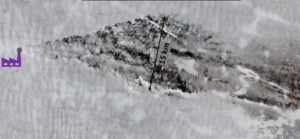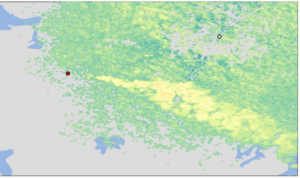Exploring how industrial aerosol particles create ice in clouds and alter climate
Would you like to help address how clouds respond to human activities, one of the biggest uncertainties in climate models, do you have a background in a physical science and do you want to further your career in one of the world’s leading atmospheric science institutes?
You will become a member of the Ice Nucleation research group in the Institute of Climate and Atmospheric Science where you will focus on a set of experiments inspired by a new discovery that aerosol from certain industrial plants nucleate ice in supercooled clouds and remove those clouds. You’ll get to use some cutting edge instrumentation and work with an international team of researchers on this problem.
Ice particles, clouds and climate
It is becoming increasingly clear that atmospheric ice-nucleating particles (INPs) play a pivotal role in clouds and climate. These enigmatic particles trigger ice production in supercooled clouds, leading to a cascade of microphysical processes that dramatically alter cloud properties. Hence, INPs are key to defining clouds in the present climate as well as how these clouds respond, and feedback, to a warming world (Murray et al. 2021).
However, the sources, sinks and abundance and of INP around the globe are very poorly understood. While we know that natural aerosols like desert dust and sea spray are very important INP types, it is very unclear to what extent human activities produce INPs and to what extent these aerosol particles alter clouds and climate.
Humans appear to be producing ice-nucleating particles
In a very recent and exciting development our project partner (Velle Toll at the University of Tartu in Estonia) has used satellites to discover that certain industrial plants produce INPs (Toll et al. 2024). The evidence comes in the form of cloud clearing events where holes appear in supercooled stratus clouds downwind of industrial point sources and then snow is subsequently seen on the ground in a plume shape (see the figures). What we think is happening here is that these industrial plants are producing INPs in a plume that then mix into stratus clouds that are otherwise devoid of INPs. These industrial INPs then trigger ice formation and the resulting ice crystals grow at the expense of supercooled water droplets and fall out as snow, thus removing the cloud. Intriguingly, only certain types of industrial plants produce cloud clearing events, which gives us some important clues as to which aerosol particle types might serve to nucleate ice. This is very surprising because the prevailing view is that human produced aerosol generally do not nucleate ice.



Satellite images shows how emissions from industrial plants cause ‘holes’ to be created in a stratus cloud decks (images courtesy of Velle Toll). Right: visible image, centre: radar showing snow fall (yellow) and right: IR map with red indicating the warmer surface is exposed. Data like this will help us to pinpoint which anthropogenic aerosol particle types we will focus on in our laboratory work.
While these cloud clearing events themselves are probably not important for climate, they do indicate that there is a previously unaccounted for source of human-made INPs. Your project will involve identifying what these particles are and how effectively they nucleate ice as well as working towards understanding their global concentration and potential influence on clouds and climate.
Your project objectives will include:
- Work with our partner, Velle Toll at the University of Tartu in Estonia, to identify which aerosol particle types we should target in our experimental study by studying the temperature resolved frequency of cloud clearing events near different types of industrial plants.
- Learn to use our aerosol chamber, aerosol samplers, aerosol sizing equipment and state-of-the-art ice nucleation equipment. This experience will give you highly transferrable and valuable skills.
- Conduct a sequence of experiments to quantify the ice nucleating ability of industrial aerosol types. This will likely include cement products, cellulose, ashes etc.
- Perform a set of model simulations to understand if the measured ice-nucleating activities can account for the cloud clearing events observed by satellite.
- Potentially use our portable aerosol samplers to collect aerosol samples downwind of industrial sites.
- Assess if these anthropogenic INP types can compete with natural INP types on a global scale, thus addressing the fundamental question of if there is an anthropogenic cloud glaciation climate forcing.
Further reading:
- There is a pre-print of our cloud clearing paper here: Toll et al. 2024.
- An overview of the importance of ice nucleating particles: Murray et al. ACP 2021
- A recent paper on ice nucleating particles from high latitude sources that gives some ideas of the sort of work we do in the Ice Nucleation group: Barr et al., 2023
- One of the key instruments that will be used in this study is the PINE chamber, here is a description of PINE (Mohler et al. 2021) and a paper where we used PINE (Ponsonby et al. 2023)
Contact
If you are interested in this project, please get in touch with Prof. Ben Murray. b.j.murray@leeds.ac.uk
